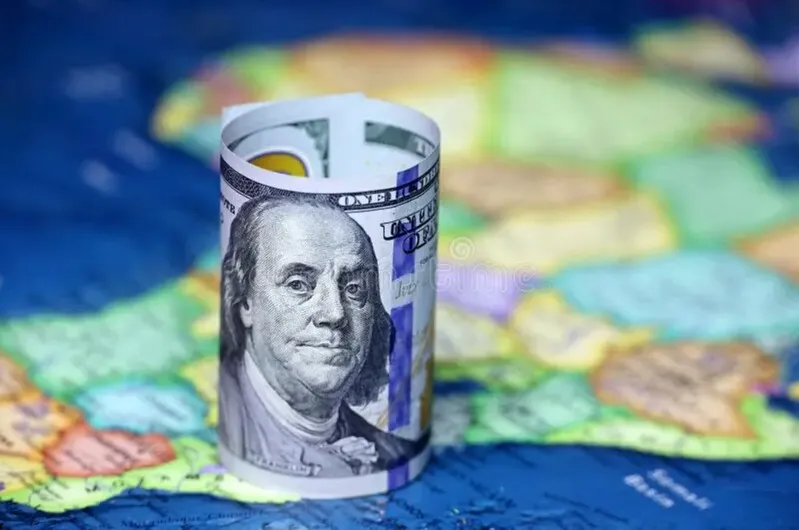A strong US dollar creates dangerous global economic conditions by making American exports less competitive, crushing emerging market economies with expensive debt, and accelerating worldwide de-dollarization efforts. Right now, the still strong US dollar is actually causing significant problems as countries struggle with dollar-denominated debt that becomes increasingly expensive to repay, along with essential commodities priced in dollars that inflate costs globally.
Also Read: J.P. Morgan: BRICS De-Dollarization Will Trigger US Borrowing Spike
Strong US Dollar Effects On Trade, Trump, And Global De-Dollarization

Export Crisis Hits American Business
The strong US dollar makes American products far too costly in other nations and this works against producers and farmers who depend on foreign markets. Companies which are reporting revenue loss of about 15-20 percentage in foreign markets are increasingly finding that the strong US dollar harmful effects are spreading to export industries. The earnings of multinational corporations get reduced when they are converted back as the dollars becoming strong.
The agricultural exporters are especially under pressure now because competitors in other countries whose currencies are weaker than theirs capture a higher market share in major markets. The manufacturing companies are experiencing the same dilemmas and most of them are redefining their plans to expand because they are less competitive.
Emerging Markets Face Debt Disaster
Countries across Latin America, Africa, and Asia borrowed heavily in dollars and now they’re facing crushing repayment costs. When asking does Trump want a strong or weak dollar, the current strength creates severe problems for developing nations with dollar-denominated debt.
Turkey and Argentina have already experienced financial stress, burning through foreign reserves trying to stabilize currencies. Capital flight accelerates as investors pull money from emerging markets, which creates a vicious cycle where weakening local currencies make debt repayment even harder.
Commodity Inflation Spreads Globally
Essential commodities including oil, wheat, and natural gas are priced in dollars, making them significantly more expensive when the strong US dollar strengthens. Countries with weaker currencies pay 20-30% more for energy and food imports, which creates budget deficits and food security concerns.
Energy-importing nations see government spending strained as fuel costs consume larger budget portions. This dynamic particularly affects import-dependent countries in Africa and Asia, where basic necessities become unaffordable for many citizens.
De-Dollarization Accelerates Worldwide
The strong US dollar dangerous policies push countries toward alternatives to dollar-based systems. China and Russia are leading efforts establishing new payment mechanisms, while BRICS nations accelerate discussions about alternative reserve currencies.
Central bank dollar holdings decline as a percentage of total reserves for the first time in decades. Countries including India, Brazil, and some European nations increase gold purchases and settle more trade in local currencies, which fundamentally challenges dollar dominance.
Understanding where the US dollar is strong reveals how currency strength creates global imbalances. Who benefits from a strong dollar primarily includes US consumers enjoying cheaper imports, but these benefits come at the cost of international stability.
Financial Markets Destabilize
The very high rate of dollar increases causes currency crashes in various countries at the same time. Systemic events that occur commonly in current-day finance happen because investment conduits and most derivative exposures connect with each other.
Larger financial institutions and observed heightened volatility in their international portfolios and for the Sovereign wealth funds- it is difficult to keep their returns stable across currency zones. Even stable economies are surrounded by uncertainty on investment decisions and trade financing.
Also Read: SCO’s Tianjin Summit: 20+ Nations Embrace 80%+ Ruble-Yuan Trade Shift
What happens now is that the US dollar faces threat not due to external factors, but due to its extreme robustness which is causing unsustainable global imbalances. The countries are busy developing alternatives to dollars as a currency as awareness of the system is already dawning on them in regard to the inherent weaknesses of the dollar.






